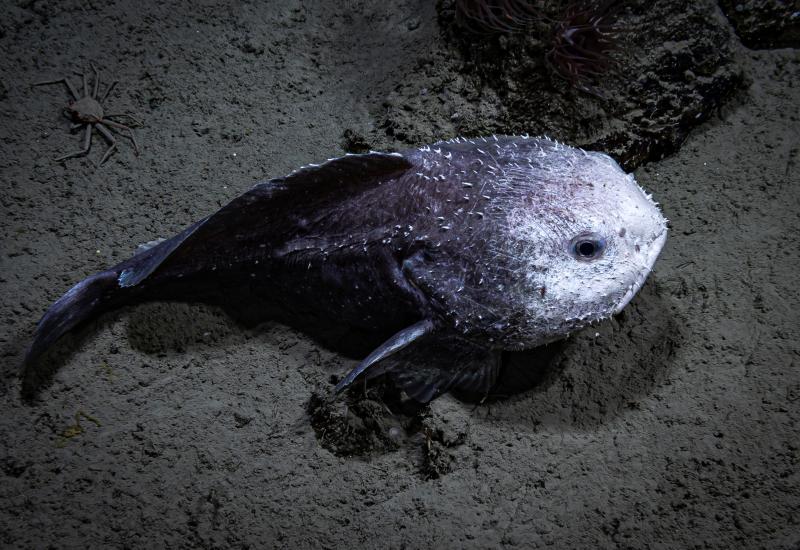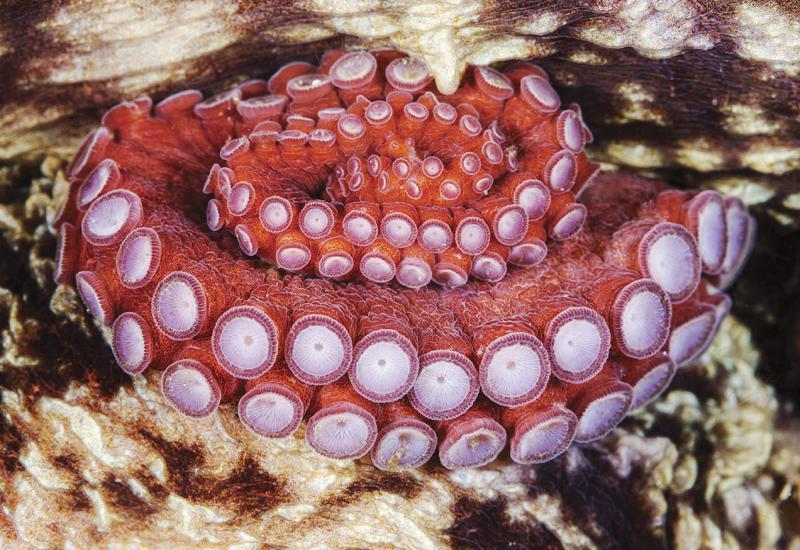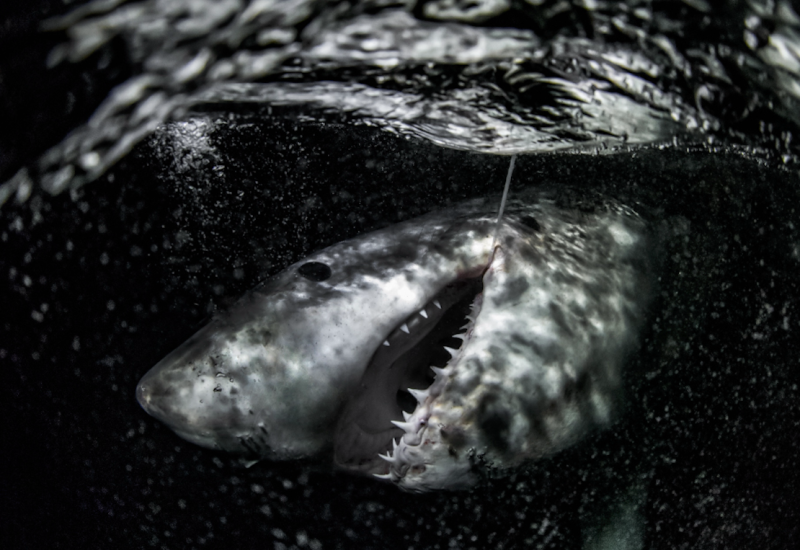One Diver's 15-Year-Long Search for the Dugong
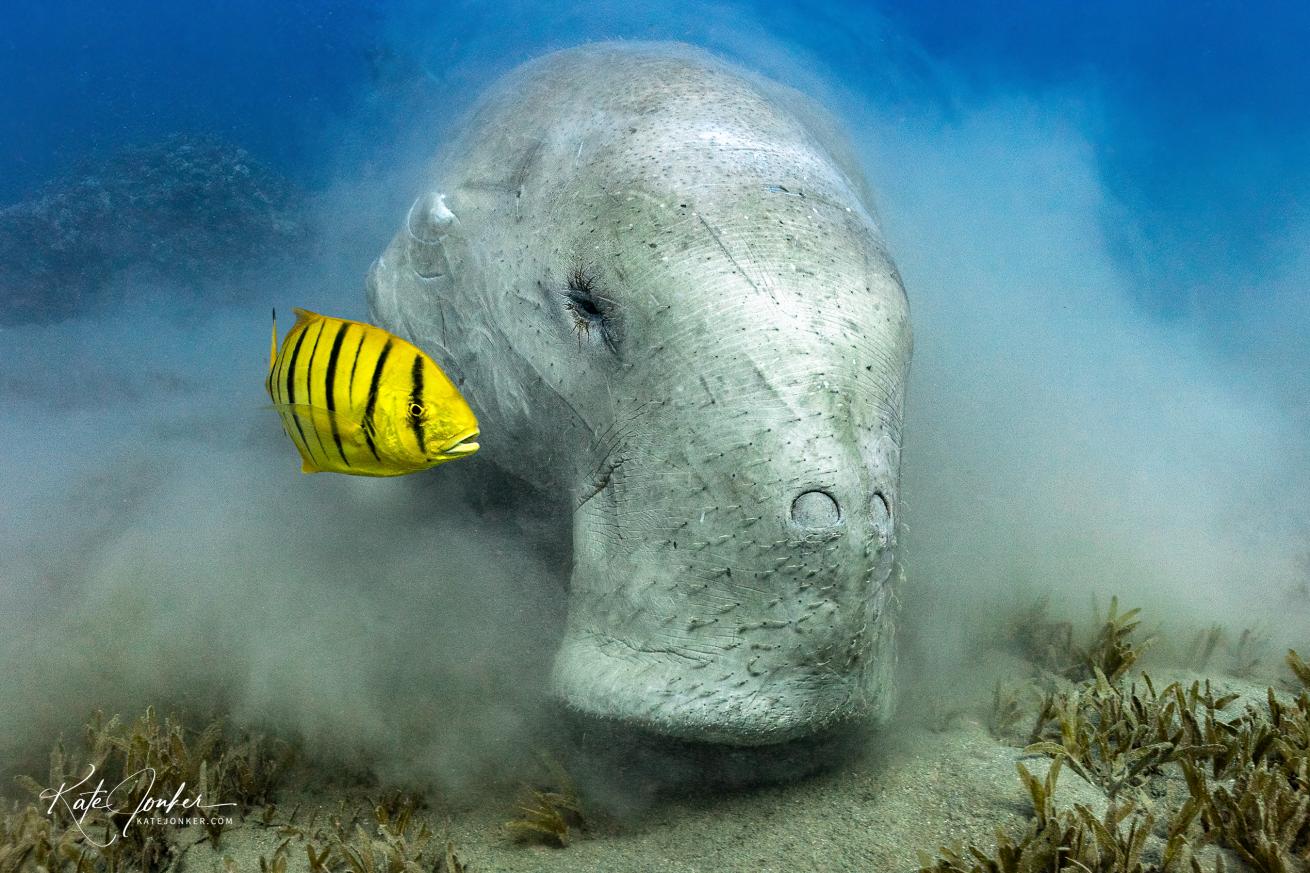
Kate JonkerThe dugong spent most of his time hoovering up the sea grass, accompanied by juvenile golden kingfish, which snapped up the tiny creatures that became dislodged by this voracious eater.
My 15-year search for the dugong started whilst I was on my Open Water Diver Course. I came across an article on manatees and dugongs in a magazine at the dive shop (probably Scuba Diving magazine!) and I was in love.
I began to research these creatures and soon realized that manatees and dugongs are not actually the same animal. Although they are both members of the order Sirena, they are quite different from one another.
Manatees have a large, horizontal, paddle-shaped tail whereas dugongs have tail flukes with pointed ends like a whale. The dugong has a short, broad, downward facing trunk-like snout whereas manatees have a divided upper lip and a shorter snout. Manatees are larger than dugongs and can weigh between 400kg and 500kg and grow to a length of 3.6m. Dugongs rarely grow larger than 3m and their average weight is 420kg.
I was disappointed to discover that manatees live in the Caribbean and the Gulf of Mexico and, as I live in South Africa, the possibility of my ever traveling there to see one was slim. I was pleased, however, to discover that dugongs could be found closer to home in Mozambique and in the southern Red Sea. All was not lost, and I was determined to find a dugong instead.
See also: Cape Hopping in South Africa on a Drive-And-Dive Trip is Peak Adventure
However, after 14 annual visits to the Red Sea, and several trips exploring the rugged coastline of Mozambique, the dugong had still not made its appearance.
I refused to be defeated, and prior to my 15th visit to the Red Sea, I asked my friends on social media for advice and was directed to a dive centre in Marsa Alam. I promptly booked a couple of days diving with them before joining a northern Red Sea liveaboard safari.
As soon as we arrived at our hotel in Marsa Alam, my husband Deon and I popped into the dive centre. We were told that the wind was about to pick up and blow very strongly for the next few days, and if we wanted to find the dugong, we would have to be back at the dive centre in an hour’s time.
60 minutes later, we were back at the dive centre, somewhat hot and bothered but kitted up and being given a very thorough and professional briefing by our dive guide Biso. The plan was for our skipper Abdo to take a small zodiac boat out to a nearby reef where the dugong’s favorite food—sea grass—was plentiful.
As we walked across the coarse sand to our zodiac, Biso told us that the best way to find a dugong was from the boat as, being air breathing mammals, dugongs must come up for air every three to six minutes and he could then see them on the surface quite easily. He told us that if the dugong was there, we should wait on the boat until it had come up for air, descended again and started grazing—and only then could we enter the water. He added that it was important not to frighten the dugong as they swim extremely fast and once spooked, it would swim away, and we would never catch up.
See also: 5 Fantastic Red Sea Shipwreck Dives
Just as Abdo was loading our cameras onto the little zodiac, Biso pointed to a small boat just beyond the reef, “It’s here!” he exclaimed excitedly. “You see those snorkelers? They are following the dugong!” he added.
I could not believe my luck and hoped that the snorkelers would not chase it away.
As we came alongside the other boat, the dugong surfaced right next to us. I could clearly see its large white body as its snout broke the clear, turquoise water for a huge breath of air.
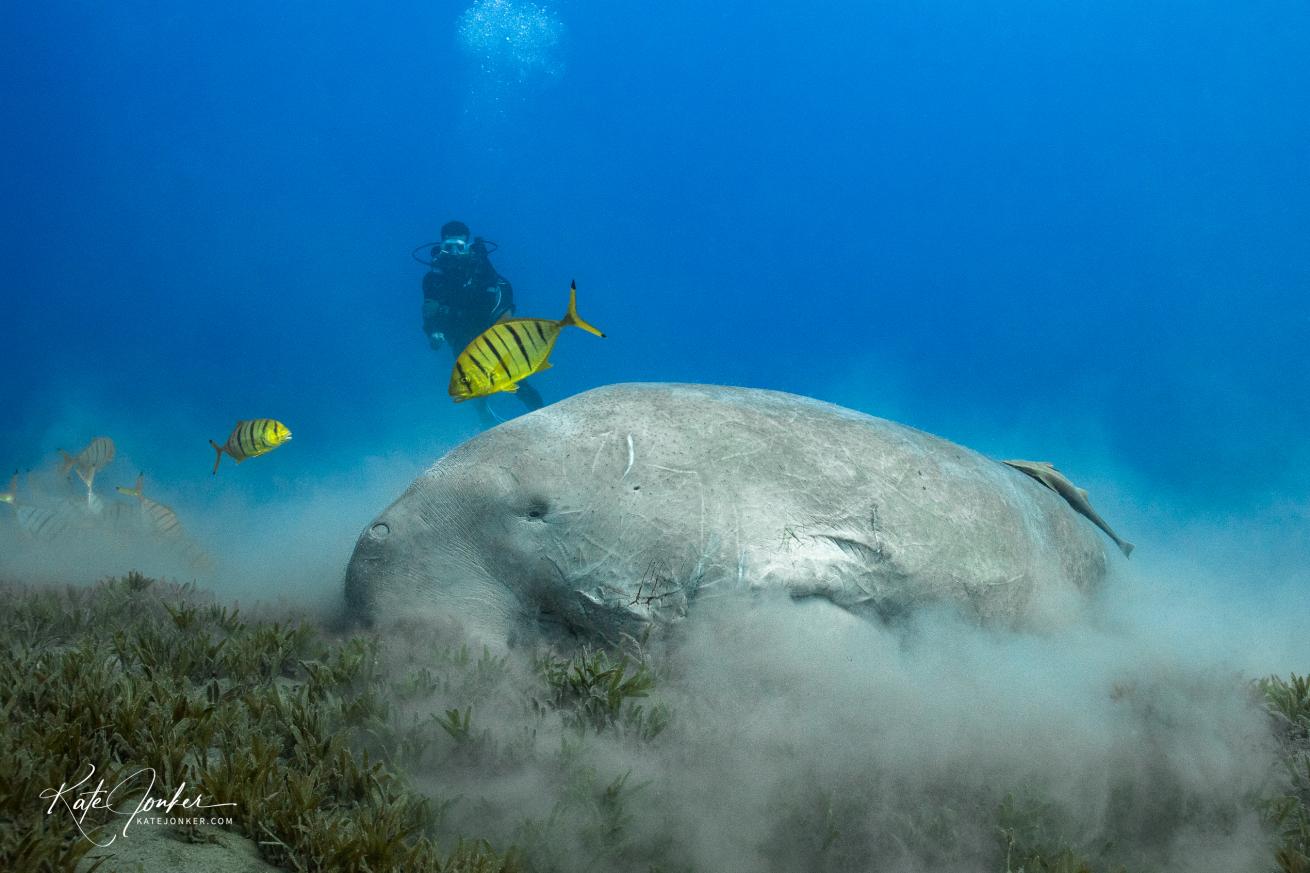
Kate JonkerKate Jonker's guide Biso watches as the dugong munches his way across a large patch of sea grass.
I was in awe and could not believe that the creature I had only ever dreamed of seeing was there! It was a goose-bump moment and I shed a couple of tears whilst nobody was looking my way.
The dugong swam lazily amongst the snorkelers before taking a final breath and making his way downwards to the seagrass bed below us. Once he had started eating, we were allowed to descend carefully and settle ourselves close by.
As I watched, he stirred up huge plumes of fine sand as he mowed across the sea grass, and it appeared as if he was floating amongst the clouds. I was enthralled by his whiskers, his tiny eyes and what looked like eyelashes. He was joined by some juvenile golden kingfish who snapped up tiny creatures that were dislodged from the sea floor as he grazed.
I spent an hour underwater with this magical creature, who I had longed to see for so many years. He was very relaxed and allowed me to photograph him as he hoovered his way across the seagrass-covered sea floor, popping up for air every now and again and then returning to join us for more.
Eventually he must have eaten his fill as he rolled over onto his back and gave himself a leisurely back scrub before swimming away.
We finished our dive, and as soon as our heads broke the water, I started laughing, cheering, and thanking my buddies. It had been an experience I would never forget.
Back at the dive centre, Biso told me that the dugong we had seen was a young male and one of two that sporadically visited the reef. I had been impressed with the dive centre’s ‘don’t chase, give it space and don’t touch’ approach and not once did I feel we were invading this incredible creature’s personal space. This could be why he stayed with us so long.
As predicted, the wind picked up that afternoon and continued to blow for the next couple of days, dropping visibility on the shallow reef. If we had not dived that afternoon, we would not have found the dugong. This is why we, as scuba divers should live by the saying Carpe diem, seize the day—take every opportunity that comes your way—you never know what you might miss!
Kate Jonker is an award-winning writer and underwater photographer based in Gordon’s Bay, just outside Cape Town, South Africa. Kate’s passion lies with sharing her love of the ocean and her underwater experiences with others through photography and storytelling.

